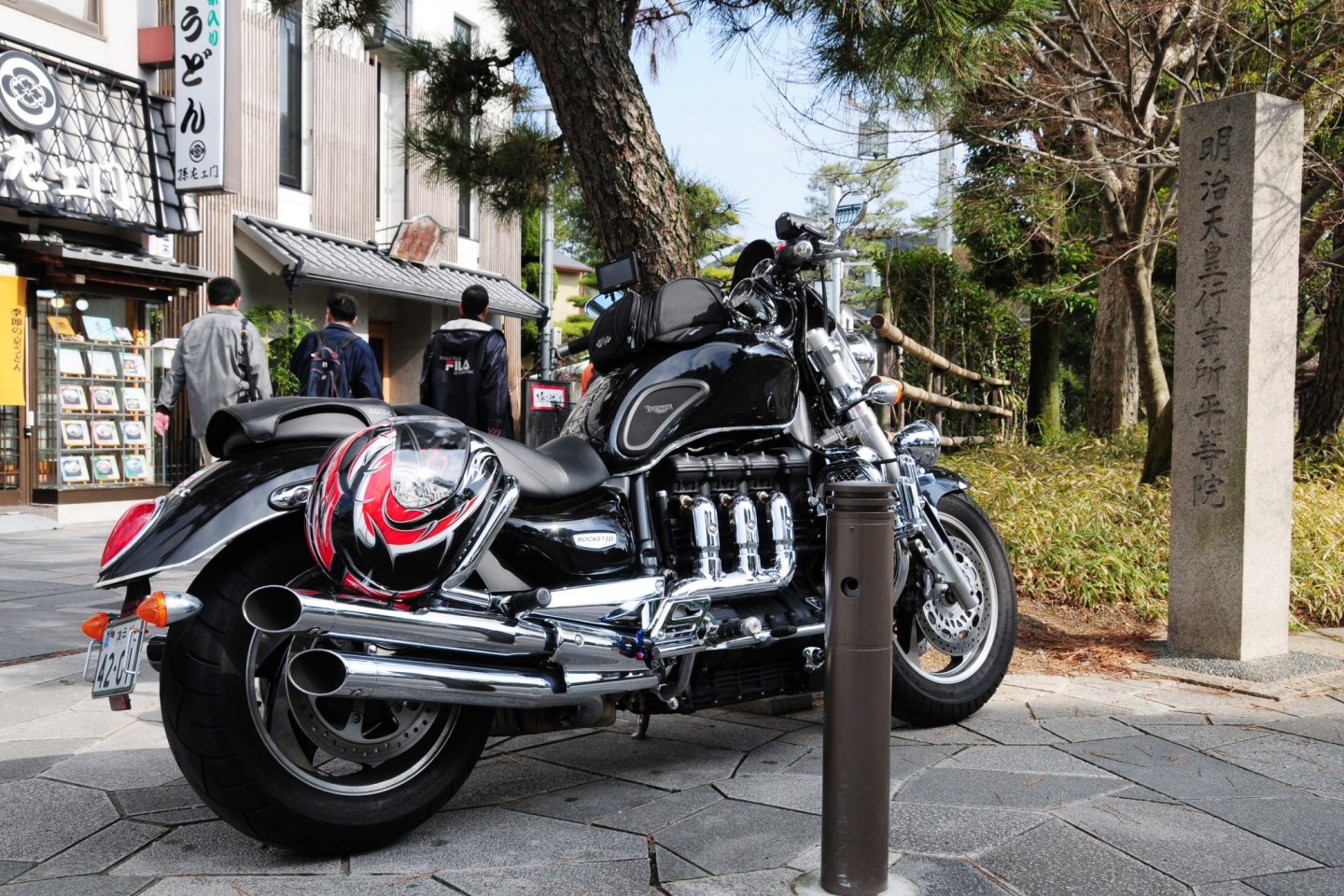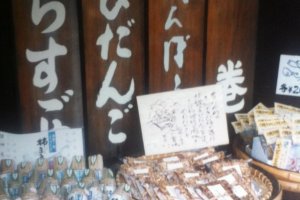A humble leaf bought over from China by an unassuming priest many moons ago. Who would have thought that a whole town now lives and breathes by this discovery? Today I am strolling down Uji’s Byodoin Omotesando, with the sound of geta (a kind of Japanese wooden clogs) clacking on the cobbled stone walkway, and the fragrance of intoxicating tea leaves fill the air amongst the tea houses, many of them with tea roasters facing the street, so you are bound to trip over one before too long.
There are over a dozen varieties of tea on display, from roasted hojicha to green tea. Many tea houses have a folksy feeling, with old wooden barrels, indigo cloth screens (norens) and old townhouses giving the street an almost movie set like feeling. The ladies serving tea samples in traditional costumes add to the charm, and for those who prefer to eat rather than drink tea, the green tea infused soba or matcha ice-cream and desserts make a great afternoon break.
These days, some of the world’s best tea comes from Uji. the best time to visit is May and June, and you can take part in the first harvest of the season, called Shin cha. The tea leaves are at its most succulent, the soft spring sunlight together with expert hand picking and steaming bringing out the best in the tea leaves. The topography also helps, with the soft morning fog from nearby Uji River sending the tea leaves into a pleasant lullaby.
On the left hand side of Omotesando is the Byodoin branch of the Nakamura Tokichi tea house. Step inside this tea shop from the nineteenth century, and enjoy matcha jelly, chiffon cake or other delectable snacks and desserts by the riverside.
To go back to an even earlier time, cross the river to the Tsuen tea house, which has been serving tea since 1160, making it the oldest tea shop in Japan, if not the world. Founded by Tsuen Masahisa, he was a retired Samurai who opened the teahouse next to Ujikawa bridge, a strategic crossing point between Nara, the old capital, and Kyoto, the capital at that time.
In those days, it would take a few days by horseback from Kyoto to Nara, crossing the river at Uji, and only the privileged, like the characters portrayed in The Tale of Genji, have the luxury of travel. Tired travelers after a long journey would relax and refresh at Tsuen Tea House, which is remarkably well preserved.
Today, Uji is just eighteen minutes by express train from Kyoto, and at just 230 yen for a train ticket, you will have plenty of change left over to eat like the Samurai. And if you are in a hurry, the main store (honten) of the Nakamura Tokichi tea house is right next to the station. Otherwise, stroll towards the river, and in five minutes you can go back to the movie set like street of Ometesando.
Another place of interest is the Byodo-in World Heritage Temple complex. It has been recently renovated, making it a beautiful place to visit on a sunny day.































